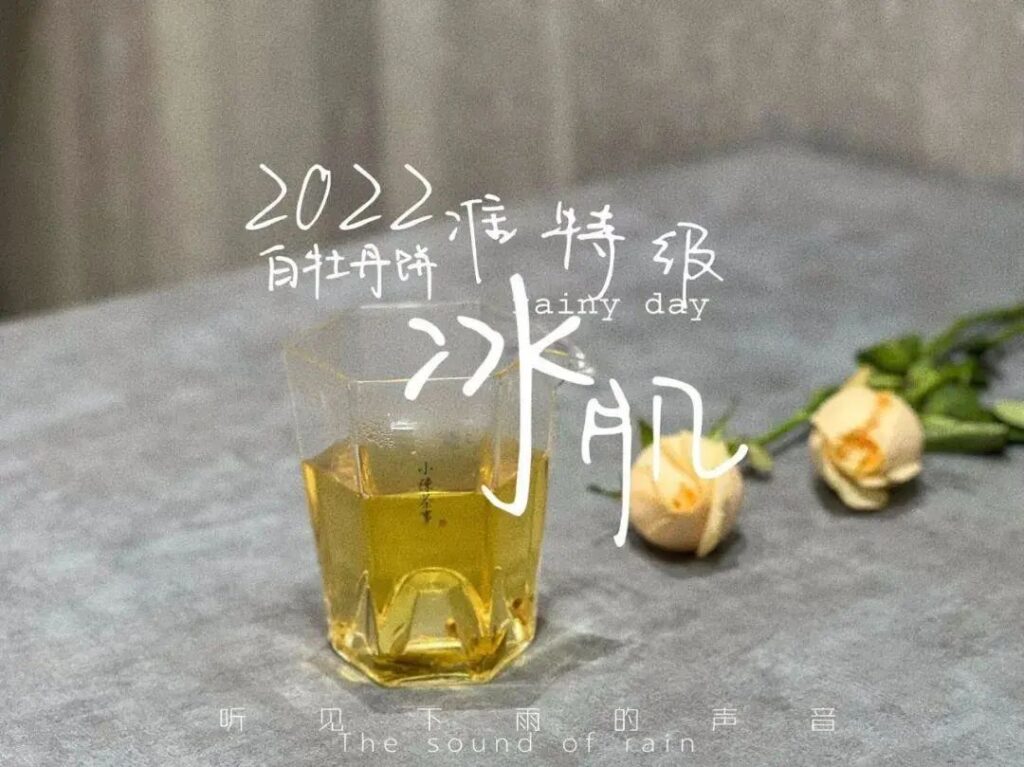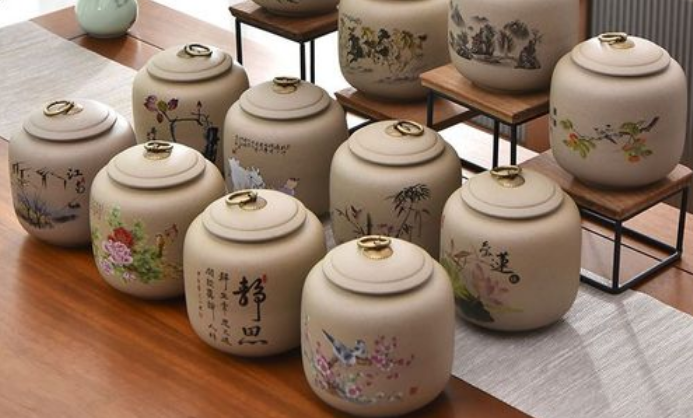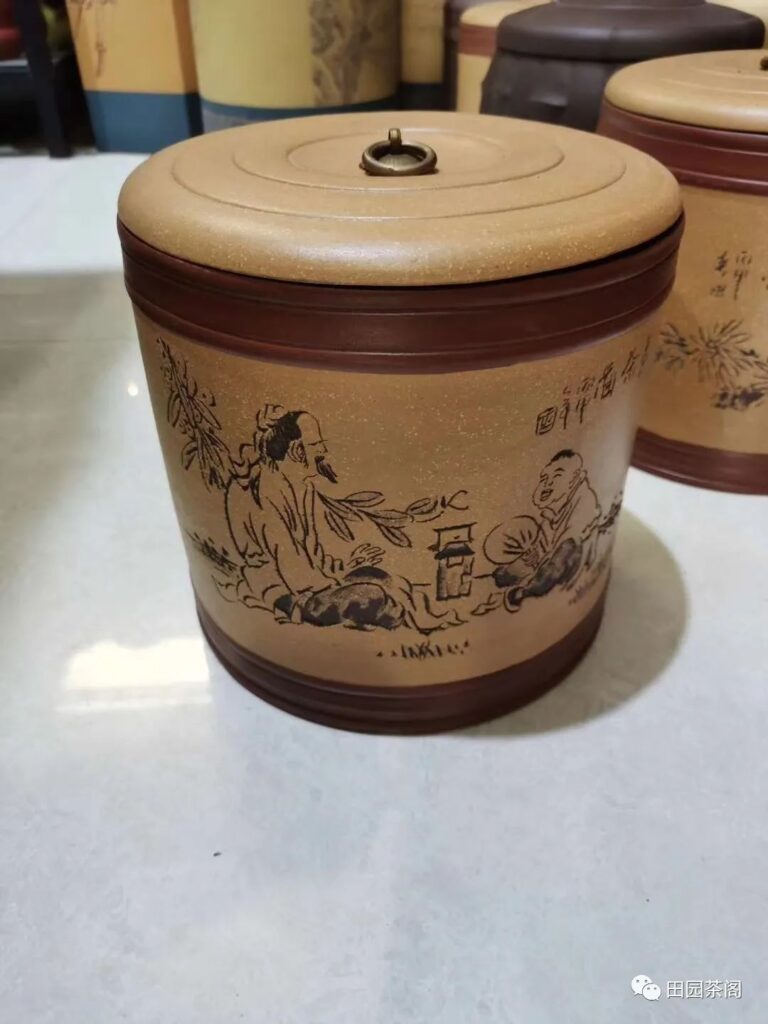(1) There are general rules for tea storage. Store tea in a sealed, light – proof, cool, dry place free of strange odors. However, some tea lovers left messages recently, mentioning the differences in tea storage between the north and the south.
“Tea storage in the south is a bit more troublesome. The north is dry, and all those details you mentioned for tea storage are not needed.”
“I always put the tea cakes in the drawer after opening.
After reading these words, I thought of Liu Bei who carelessly lost Jingzhou back then. Well, tea storage doesn’t depend on whether it’s in the north or the south. Sealed storage is very important. The purpose of sealed storage is, externally, to prevent the intrusion of external water vapor and strange odors, so as to avoid the tea getting damp and changing its taste. Internally, it focuses on preventing the aroma of good tea from dispersing and the tea from losing its flavor. Therefore, even if the climate of the city where you live is dry all year round, you can’t take tea storage lightly. A small error can lead to a big mistake. In the end, it would be a pity if the tea deteriorates and changes its taste. For beginners in drinking tea, learning to select tea is just the beginning. What needs to be mastered next is a series of tea storage skills. Avoid these 7 easily overlooked details in daily tea storage so as not to “ruin” good tea easily.
(2) I. Storing tea in transparent containers. Tea storage should be light – proof. Because light can damage the color, aroma, and taste inside the tea in all aspects. If tea is stored without light protection, natural pigment substances including chlorophyll will be damaged, and the color of dry tea will change rapidly. At the same time, it will also affect the tea aroma, resulting in the aroma becoming weaker day by day.
The taste of the tea will become thinner and more boring, and the mellow feeling will decline. For this reason, when storing tea, avoid transparent containers. Glass jars, PVC plastic jars, pure transparent sealed bags, etc. are not good choices for tea storage. For short – term tea storage, it is more recommended to use iron cans or tin cans. Or sealed zipper bags with an inner aluminum film layer. For long – term tea storage, especially for white tea or Pu – er tea, the method of layer – by – layer combination and sealing with a cardboard box + food – grade plastic bag + food – grade aluminum bag is more practical.(3) II. Don’t place tea cakes casually. There is such a misunderstanding among many new tea lovers. They think that after loose tea is pressed into tea cakes, the tea storage process is more convenient, and tea cakes don’t need to worry about getting damp. Even if the surface of the tea cake gets damp, the inside is still intact. When drinking tea, after prying open the deteriorated part, the remaining tea still has an excellent taste.
But this idea is absolutely unacceptable. In tea storage, loose tea and tea cakes are the same. Even if only a small part of a single tea cake changes its taste or deteriorates, for safety’s sake, it is not recommended to continue drinking it. Placing tea cakes casually is not a good tea storage habit. After unpacking the tea cake and putting it in the drawer casually, it is easy for the tea to lose its flavor, get damp, and absorb strange odors. Emulating the display method of tea shops and placing tea cakes on the display rack is even more infeasible. When shops display tea cakes, they will choose tea cake molds (which may only contain broken wood chips inside) and wrap them with a layer of cake paper, without any moisture – proof measures, just for showing the size, specifications, and packaging patterns externally.Storing tea at home requires careful consideration. Displaying fine tea openly is akin to pushing it into the abyss. For daily consumption, it is advised to place tea cakes in well-matched, airtight bags and store them in a dry, cool environment, ensuring they are consumed promptly.
III. Not sealing in time. On one occasion, with friends coming over for tea, I fetched two servings of silver needle tea from the warehouse in advance. One was the 2022 organic silver needle, and the other was from 2015, both placed on tea sample plates for guests to admire the dry tea. Due to time constraints, only one serving was brewed, and the other was left untouched. Left on the table overnight, by the next day, the tea’s aroma had significantly dissipated, far less fragrant than when freshly unpacked from the warehouse. This illustrates that tea’s fragrance is volatile. After handling tea, it must be tightly sealed and consumed promptly to avoid the loss of its quality. IV. Avoid mixing tea storage. ‘I have bought a variety of teas over the years, including raw Pu-erh from a few years ago, which still has half a catty left. Additionally, I have purchased several types of Shou Mei, with three to four different flavors. Can these teas be stored together?’ It is preferable to store teas individually to maintain their unique aging conditions. This approach is more conducive to their later maturation. To save space and avoid a disorganized display of cardboard boxes, it is acceptable to store different types of tea in one box, provided they are each sealed separately using aluminum or plastic bags before mixing and boxing. Note that even within the same category of Shou Mei, differences in aroma and taste can be significant due to varying years, production areas, and manufacturers, so do not mix them indiscriminately. Independent sealing helps maintain the fine flavor of the tea. V. Check moisture content before storing tea. Broadly speaking, tea is a dry product. To facilitate long-term storage, the lower the moisture content, the better. If you purchase new tea that hasn’t been thoroughly dried and does not meet moisture standards, it is destined to be a problem in storage. Tea with excessive internal moisture will inevitably become damp and spoil regardless of the storage method. Considering this, tea enthusiasts should be cautious when purchasing new tea that is released too early, such as West Lake Longjing available in early March or Bai Hao Yin Zhen in early April. Early releases often carry the risk of being poorly processed with untimely drying of moisture. When buying tea, it is important to inspect it thoroughly. Dry tea should feel dry to the touch and have a rich, dry aroma, indicating it is worth purchasing.6. Don’t casually put tea in the refrigerator.
Most of the tea on the market doesn’t require low-temperature preservation. Room temperature and dry storage are more than sufficient.
For example, white tea. After being put in the refrigerator, the low-temperature environment is actually not conducive to the natural aging of old white tea.
For example, ripe pu-erh tea. Ripe pu-erh tea needs to rely on specific fungi to promote its later transformation and is not suitable to be kept in the refrigerator.
Another example is yancha. When Wuyi yancha is processed, it goes through the roasting process. The dry tea has a strong aroma and an obvious caramel aroma. Putting Dahongpao, Shuixian, and Rougui in the refrigerator will have the opposite effect on tea storage.
In addition, even for teas that pay attention to flavor preservation, such as green tea and light-flavor Tieguanyin, they cannot be casually put into the refrigerator rashly.
7. Don’t open the box frequently.
It is not recommended to open the box of tea frequently after it has been sealed in a large box.
For example, assume that tea lover A bought 3 catties of first-class white peony this year. After receiving the goods, it comes in a large box. The outer box is a thick cardboard box, and there are plastic bags and aluminum bags inside for separate sealing. For such a tightly sealed large box of tea, it is not recommended to open it rashly.
For daily tea storage, it is necessary to distinguish between “long-term storage” and “short-term storage”. Don’t disturb the tea stored for a long time frequently. After opening the box once, divide about two or three taels of dry tea. Store it separately in an iron can or a sealed bag for daily drinking, which is more conducive to later tea storage!
Once in a live broadcast room, I heard such an absurd scenario.
A tea merchant had an unexpected harvest when going to the tea mountain to select tea.
It turned out that when a tea farmer was renovating his own warehouse, he accidentally found several boxes of old tea made more than twenty years ago hidden in a certain single room. After it was made at that time, it was placed in a narrow room at the edge of the warehouse.
Such old tea with more than 20 years of age is limited in quantity. Buying it is a matter of fate… Many tea customers who don’t know the truth may get particularly excited when they hear words like “20-year-old”. They may think that they have never drunk white tea of such an old age. If the price is not expensive, it doesn’t hurt to buy some back and try. Hold on, there is a trap behind this. More than 20 years ago, there were not many in Fuding who could have such a large warehouse for large-scale batch tea storage.
The story itself is quite unreasonable. On one hand, keeping tea in sealed, cramped spaces for years without any fresh air circulation leads to the accumulation of stale and dusty odors, which negatively affect the storage quality of tea.
On the other hand, there are old teas that have been stored for over two decades without any inspection or sampling. Whether the tea has spoiled or is still drinkable remains unknown, making the risk of purchasing such tea too high! When buying tea, one cannot solely focus on external hype. The actual storage conditions of a tea are equally important. Purchasing tea that has already spoiled and changed in flavor is a waste of money!


